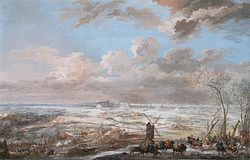| History of Belgium |
|---|
 |
| Timeline • Military • Jewish history • LGBT |
The following is a timeline of the history of Brussels, Belgium.
| History of Belgium |
|---|
 |
| Timeline • Military • Jewish history • LGBT |
The following is a timeline of the history of Brussels, Belgium.



















{{cite book}}: CS1 maint: publisher location (link){{cite book}}: CS1 maint: location missing publisher (link){{cite journal}}: Cite journal requires |journal= (help){{cite book}}: CS1 maint: location missing publisher (link){{cite book}}: CS1 maint: location missing publisher (link)